Leaving Magadi we once again faced a full day of driving across the length of Kenya to reach the shores of the lakes Nakuru, Baringo and Bogoria that would hold our attention for the next few days. As always such a day involved amazing views, a huge array of different habitats and copious amounts of napping.
Once at Nakuru town we were faced with the prospect of our accommodation for the night, The Murius Guest House, with its catchy slogan: “No illicit sex allowed under Christian morals. Unmarried couples not allowed to board.” Though we tried to rent double rooms our inability to present valid marriage certificates for the sharing pairs swiftly halted negotiations. In hindsight the fact that we didn’t reveal the pairs were same sex probably saved us a burning at the stake.
Having survived the night without being baptised or forced into marriage, we spent the morning at Lake Nakuru National Park. The park presented the usual wonders of the Kenyan wilderness; sweeping vistas, big game and a plethora of birdlife. Not only this but it was at Nakuru that we spotted the third, final and most endangered of Kenya’s three Giraffe subspecies/species (dependent on which expert you talk to), the Rothschild’s Giraffe. Despite all this Nakuru National Park felt decidedly strange upon our visit; large black tarpaulins lay covering strange shapes along the road sides, whilst grim faced Kenyan Wildlife Service (KWS) rangers drove wordlessly around the park. We were soon to find the reason for such an atmosphere as deeper in the park buffalo carcasses (untouched by any scavengers) began to appear along the roadside. A concerned call to the KWS head vet from Enoch yielded only the words “I am not at liberty to disclose…” It was not until several days later that we read in the papers that the mass buffalo die off at Nakuru was caused by an anthrax epidemic stemming from poor treatment of the sewage flowing from the town into the lake. Devastatingly alongside the death of over 100 buffalo 3 of the parks white rhino population have also so far succumbed to the disease.
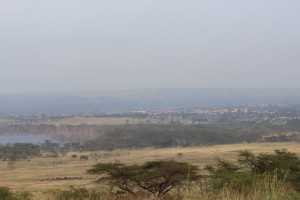
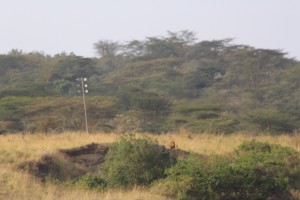

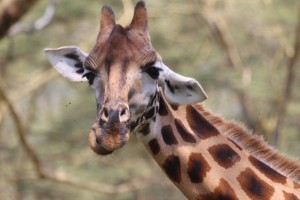
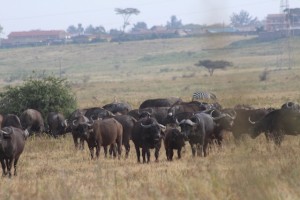
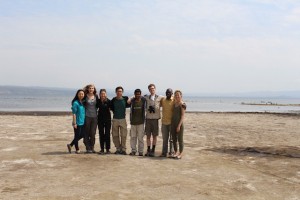
Leaving the uncomfortable atmosphere of Lake Nakuru behind us we made our way to Lake Baringo. After finding our planned rooms in a local hotel had been given over to other guests an unscheduled change of plan ensued, ultimately resulting in our spending the night in a rather nice safari lodge on the shores of the lake. As I had attempted every other night of our trip I spent the evening looking for frogs within the lodge grounds. What I hadn’t reckoned with was that unlike in previous accommodation we were sharing the lodge area with ostriches and crocodiles. Long story short, ostriches don’t like to be woken up and crocodiles are intent on eating errant night wandering herpetologists. Having survived the night (just) we embarked on a boat tour of Lake Baringo. The lake teemed with birdlife, amongst other things giving us a sighting of our first (and last) African owl (Verreaux’s Eagle Owl). Disembarking onto a small island in the lake (Ruko Island Conservancy, part of the Northern Rangelands Trust) we were greeted at very close quarters by more Rothschild’s Giraffes and one very sleepy warthog. After getting distracted hunting for skinks amongst the rocks I was eventually dragged off the island to visit some of the lake’s hot springs.




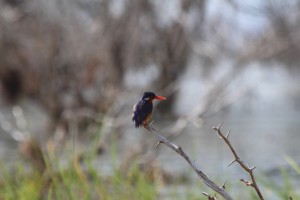

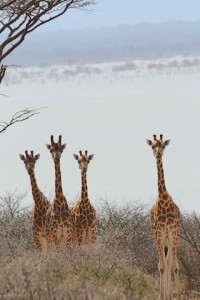
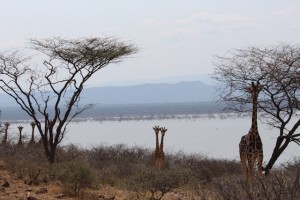
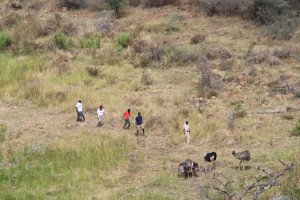
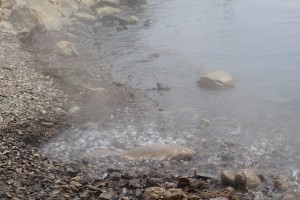

The next day we made our way to our third and final Kenyan lake – Lake Bogoria. Famed for its abundance of flamingo and for containing an isolated population of Greater Kudu, the prospect of Lake Bogoria National Reserve was an exciting one. We were all therefore rather shocked and distressed to see the state of the park. Though the flamingo density was astonishing and the views stunning, we saw more livestock than native mammals wandering through the park, with members of the public using the roads as a thoroughfare. Such activities are seen in national parks throughout the world, however the sheer scale of the problem in Bogoria was truly disconcerting. Upon investigation we were informed that after the county government took over control of the park from KWS lack of capacity and political will has led to a degradation of park management standards. We left Lake Bogoria concern for its future (though with excellent photos of flamingos, and good sightings of greater kudu).

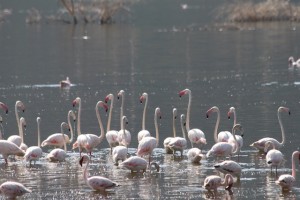
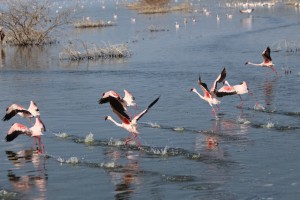
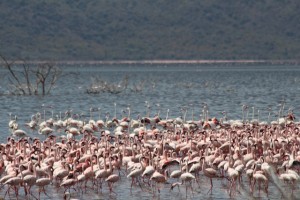

Our final official destination before many of the group finished their time in Kenya was Rimoi National Reserve. A long and very bumpy ride to Rimoi was unexpectedly interrupted by the Cheloch Gorge divers; a group of mad/stupid/brave teenagers diving of metal girders into the fast flowing waters of the River Kerio 10m below

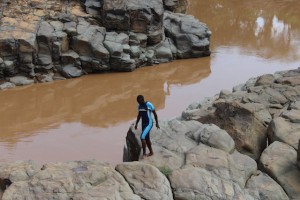

After spending half an hour wincing as each young man plunged into the brown, crocodile-infested (we saw one right on the bank) water we decided it was time to move on to the National Reserve. Far off the tourist trail, we were the only visitors to Rimoi National Reserve that week, a fact that allowed us to persuade the staff to cook us lunch (great service).
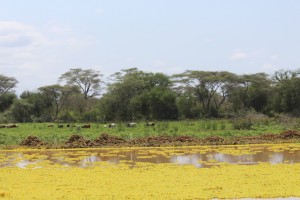
As with Lake Bogoria National Reserve we sadly saw more cows than anything else, however, the attitudes of the enthusiastic young rangers seeking to ever improve their park left us with hope for its future. Leaving the others in the somewhat incapable hands of our driver Kenyatta, Enoch, Bhavik and I took Enoch’s landcruiser deep into the Park to find elephants. Having tracked footprints on the road for almost an hour we stopped the vehicle and proceeded into the bush on foot. Following broken branches, elephant poo and ever fresher footprints deep into the bush our chatter died down into whispers and then silence as our hearts began to race. Each of us could sense elephants were close and despite Bhavik’s skill with a panga/machete against small shrubs none of us felt this would be much help against a charging elephant when on foot and hence retreated at pace. Untrampled by elephants we made our way to the town of Iten for the night, having seen impala, baboons, dik dik, warthog and ground hornbills at Rimoi. Though not a long drive it took us several hours as we managed to successfully destroy a tire on Enoch’s car. After half an hour of learning how to change a tire on a land cruiser on the side of a mountain during a storm whilst ripping the back bumped off the car with the jack, Bhavik, Enoch and I eventually re-joined the rest of the group. Driving along the long, windy road to Iten, Bhavik was lucky enough to spot a honey badger by the roadside. We were to spend the night in what yet again turned out to be a very characterful hotel. It is not every meal a very drunk African man invades your personal space, steals your food and is dragged off the premises by the chef and his drunk friends, but in Iten it seems it is normal to experience such dinnertime “entertainment”.
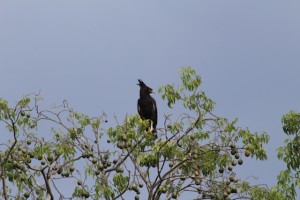
Another full day travelling involved getting hopelessly lost in Nairobi before reaching the final Kenyan beds most of the group would sleep in. The next morning saw us eating the most uncooked cooked breakfast any of us had ever experienced before bidding farewell to Brendan, Lauren, Louise and Zheng at Nairobi airport. It was with teary eyes that the remainder of the CUWCS 2015 Kenya trip prepared for the final and most ambitious leg of our journey in Tsavo National Park.
By Tom
Photo Credits: Bhavik

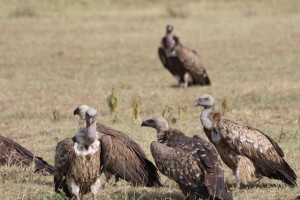
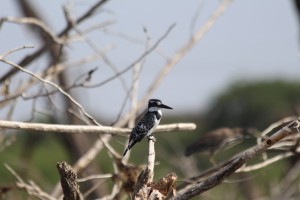
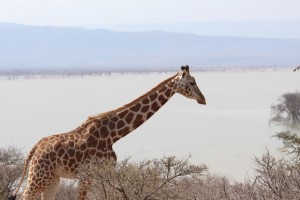

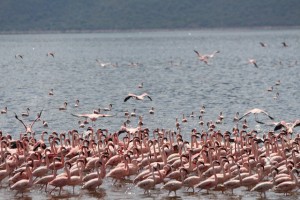

Be the first to reply